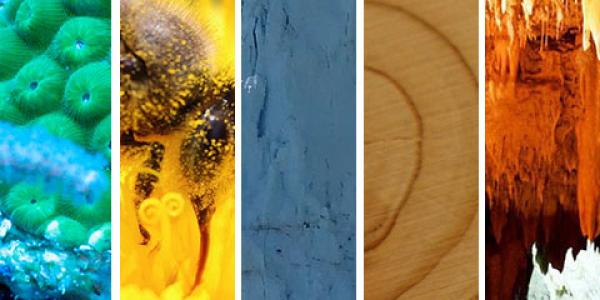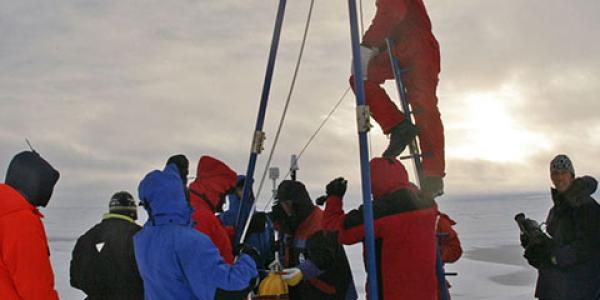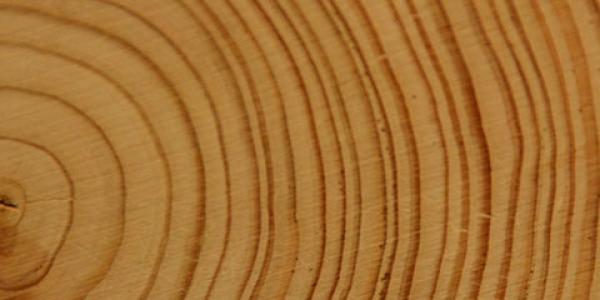
Have you ever counted the rings on a stump to find out how old a tree was? If you have, you’ve already unlocked the secret to how trees tell us about climate conditions. As a tree grows, it adds a new ring around its waistline each year. Trees not only tell us how old they are with these rings, but they also tell us how they’ve passed each year: in good growing conditions or in bad.
Documenting Tree Growth and Changes
In order to document a tree’s changes, scientists hike to sites where the groves of trees they’re interested in looking at are growing. They need to study a wide variety of samples from different trees of the same species to have a representative sample for the area and to get a reliable picture of the area’s climate conditions.
Initially, when scientists hike to their sites, they will survey the surroundings, ensuring that they are in a location where humans haven’t altered the forests with activities such as grazing and logging. Individual trees are selected based on their apparent age—the oldest provide the longest climate histories—and positions that are likely to make the trees most sensitive to environmental conditions, such as away from streams or springs that can mask the potential moisture-sensitive history in the annual rings.
Next, they begin to core the trees using what looks like a big corkscrew. A tree corer is essentially like a hollow-bit drill and works similar to an apple corer. They begin by turning the tree corer into the tree and then they turn and turn. It takes a considerable amount of effort to reach near the center of a large tree. Once they reach the center, the scientists can pull the core out to examine the rings without harming the tree.
Scientists core living trees to discern growth patterns over the lifespan of the trees, which is often several centuries. If available, dead trees and remnant logs can also be sampled, allowing for the production of a longer ring-width record. Ring patterns from dead trees can be matched up to the rings of living wood in a process called cross dating, which allows them to establish the date the dead tree began growing and its ring patterns until it died.
Examining the Rings of Information
Once they have them in hand, the scientists return to the lab to spend hours examining the large number of cores they gather. On the plus side, the larger the number of samples they have to examine, the more certain scientists can be that changes in the rings are associated with climate. To begin examining the cores, scientists mount them in a way that they are facing upright for a microscope. Then, they sand them down to make them so smooth that every ring can be seen distinctly under the microscope. All cores are cross-dated to make certain no rings have been misidentifed in any sample, ensuring every ring is assigned to the correct calendar year.
Scientists use microscopes to examine the cores and take very precise measurements of the ring widths and cell density characteristics because each ring is a signal of year-to-year climate variability. Depending on their location and type, trees can describe precipitation or temperature conditions. Trees that depend heavily on temperature in the growing season will have narrow rings during cold periods and wider rings for warm periods. Trees that depend heavily on moisture during the growing season will have wider rings during rainy periods and narrower rings during dry periods.
Weather data from nearby weather stations or sometimes larger-scale gridded data are compared against the ring-width time series. If there is a strong correlation, the ring widths can be used to reconstruct climate conditions for the length of the tree ring record, which is often several centuries and occasionally a thousand years or more.
One Piece in the Puzzle of Past Climate
As many paleoclimatologists examine tree rings all over the globe, we can get a global picture of past climate. And, because tree-ring data can be hundreds or thousands of years old, it allows scientists to extend climate records back in time well before modern weather instruments were invented. By understanding the past climate using tree rings and other paleoclimate proxy data sources, scientists can more accurately predict future changes in the climate system.
NCEI’s Paleoclimatology Program distributes the data products of various collaborative efforts to collect and organize tree-ring records from around the globe. Check out all of our available tree-ring data on the Paleoclimatology Program’s Tree Ring web page.




